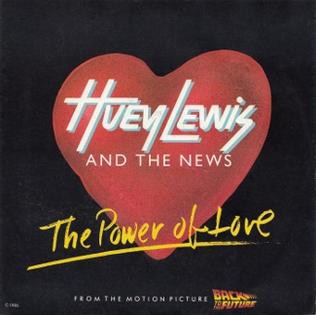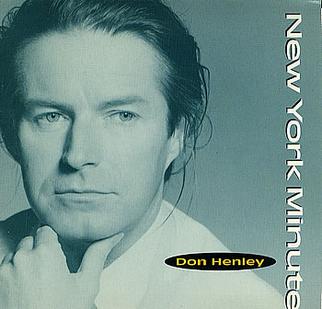 “Limelight” by Rush is not just one of the most celebrated tracks in the band’s legendary catalog—it’s also one of the most personal. Released in 1981 on their critically acclaimed album Moving Pictures, the song marked a turning point not only in Rush’s commercial trajectory, but also in the way rock music confronted themes of fame, identity, and alienation. Written by drummer and lyricist Neil Peart with music composed by guitarist Alex Lifeson and bassist/vocalist Geddy Lee, “Limelight” fused progressive ambition with radio-friendly accessibility, all while speaking from the soul of a man who was ambivalent about celebrity. The result is a timeless anthem that remains one of the most poignant, musically dazzling, and emotionally complex songs of the era.
“Limelight” by Rush is not just one of the most celebrated tracks in the band’s legendary catalog—it’s also one of the most personal. Released in 1981 on their critically acclaimed album Moving Pictures, the song marked a turning point not only in Rush’s commercial trajectory, but also in the way rock music confronted themes of fame, identity, and alienation. Written by drummer and lyricist Neil Peart with music composed by guitarist Alex Lifeson and bassist/vocalist Geddy Lee, “Limelight” fused progressive ambition with radio-friendly accessibility, all while speaking from the soul of a man who was ambivalent about celebrity. The result is a timeless anthem that remains one of the most poignant, musically dazzling, and emotionally complex songs of the era.
By the time “Limelight” was released, Rush was well into their second decade as a band, having formed in Toronto in 1968. Through albums like 2112, Hemispheres, and Permanent Waves, they had established themselves as the intellectual backbone of progressive rock. Known for extended compositions, high-concept albums, and dazzling musicianship, Rush had built a fiercely loyal fan base. Yet “Limelight” marked a pivot in their career. With Moving Pictures, they streamlined their sound without dumbing it down. The songs were shorter, the arrangements tighter, but the band’s signature complexity and thematic depth remained intact. “Limelight” was one of the album’s most direct and personal statements, offering fans a window into the psychological toll of fame—especially as experienced by someone as introspective and reserved as Neil Peart.
The lyrics of “Limelight” are nothing short of poetic. Peart’s words explore the paradox of fame: the desire to connect with an audience versus the craving for privacy. Lines like “Living in the limelight, the universal dream / For those who wish to seem” express the cultural allure of celebrity, while the very next line—”Those who wish to be must put aside the alienation”—introduces the emotional cost. This wasn’t just philosophical musing; it was personal testimony. Peart famously hated interviews and public attention. He once referred to himself as “a ghost in the machine,” and his distaste for the spotlight made the idea of the “limelight” feel more like a trap than a reward. The line “I can’t pretend a stranger is a long-awaited friend” is perhaps the most iconic from the song, encapsulating the internal conflict between public persona and private self. It’s a moment of emotional honesty rarely seen in mainstream rock at the time, and even more rarely embraced by fans. But somehow, Rush’s fans did embrace it. “Limelight” was a hit, despite—or perhaps because of—its emotional nuance.
Musically, “Limelight” is quintessential Rush. The opening guitar riff by Alex Lifeson is immediately recognizable: a bright, echoing arpeggio that blends melodic beauty with technical precision. The riff is catchy, but not simple—it has just enough rhythmic ambiguity and chordal movement to keep it unpredictable. Lifeson has said that the solo in “Limelight” is one of his favorites, and it’s easy to hear why. It’s expressive without being flashy, emotional without being sentimental. It feels like a musical embodiment of the themes Peart explores lyrically. The solo bends and twists like a soul resisting the pressure of adoration.
Geddy Lee’s bass work is equally integral to the song’s success. His tone is warm and articulate, driving the rhythm while also adding subtle melodic flourishes that elevate the harmonic structure. Lee’s voice—soaring and urgent—delivers Peart’s introspective lyrics with both clarity and feeling. He doesn’t oversell the emotion; instead, he inhabits the words as a conduit, letting their meaning shine through without affectation.
And then there’s Peart’s drumming. Always a master technician, Peart was known for his intricate patterns and polyrhythms, and yet “Limelight” shows a restraint that is masterful in its own right. Rather than overpowering the song with complexity, he supports its emotional arc with nuanced groove. His fills are precise, and his cymbal work, particularly on the ride, provides a shimmering, almost cinematic atmosphere. His choices here show a maturity—an understanding that sometimes the best drumming is the kind that lets the song breathe.
The production of “Limelight,” helmed by longtime Rush producer Terry Brown, deserves praise for balancing clarity and power. Each instrument is distinct in the mix, yet the song feels cohesive. The layered guitar textures, the subtly delayed vocal effects, and the warm low end all contribute to a sonic landscape that is both lush and immediate. Even more impressively, the song manages to sound timeless, never quite tethered to the trends of the early 1980s, even though it emerged at the height of the new wave and synth-pop explosion. It’s progressive rock with the conciseness of pop and the attitude of hard rock—a rare and potent combination.
Critically, “Limelight” helped further Rush’s transition from cult heroes to mainstream icons. The song reached No. 4 on Billboard’s Mainstream Rock chart and received extensive airplay on rock radio stations, helping Moving Pictures become one of the band’s best-selling albums. But beyond the charts, it changed how people perceived Rush. No longer just the band that wrote 20-minute epics about dystopian futures, Rush was now writing songs that tapped into universal human concerns. “Limelight” made them feel relatable, not just brilliant.
What also makes “Limelight” remarkable is how well it has aged. More than 40 years after its release, the song continues to resonate with new generations. Its themes are more relevant than ever in an era of social media, influencer culture, and viral fame. The struggle between authenticity and image, between exposure and isolation, is something artists and everyday people alike now grapple with on a daily basis. In this way, Peart was prophetic. Long before the internet magnified the pressures of public life, he had already mapped its emotional terrain in “Limelight.”
The song has also found a second life in live performances. Rush played “Limelight” consistently from its debut onward, and it became a fan favorite at their concerts. Each performance brought subtle variations—slightly altered solos, extended intros, or vocal tweaks—yet the core of the song always remained intact. Fans knew every word, every fill, every note. And each time, it felt like more than a performance. It felt like a conversation between artist and audience, one that acknowledged both the connection and the distance between them.
In a tragic yet poignant way, “Limelight” has taken on additional meaning since Neil Peart’s death in 2020. Fans now revisit the song not just as a classic, but as a kind of emotional memoir. Knowing Peart’s reclusive nature, his dislike for fame, and the personal losses he endured—including the deaths of his daughter and wife in the late ’90s—the song’s lyrics take on a heavier weight. It is both a celebration and a lament. A song of brilliance born from conflict.
The song’s influence extends far beyond Rush’s core fan base. Many musicians have cited “Limelight” as a formative track—not just in terms of instrumentation, but in how it blended intellectual depth with emotional accessibility. Bands across genres have nodded to it, from prog-metal acts like Dream Theater and Tool to indie and alternative artists who admire its lyrical honesty. It’s also been covered and referenced in everything from television shows to video games, ensuring its cultural footprint remains wide and enduring.
Yet perhaps the true legacy of “Limelight” lies in its refusal to flatter the listener. Most songs about fame either romanticize it or condemn it. “Limelight” does neither. Instead, it captures the paradox—the beauty and the burden. It makes you think twice about the price of being seen. It complicates the dream without extinguishing it. And in doing so, it becomes not just a song about fame, but a song about the self—how we protect it, how we perform it, and how we ultimately reconcile it with the world around us.
For all of Rush’s technical prowess and musical genius, “Limelight” may be their most emotionally accessible track. It isn’t about gods, science fiction, or philosophical treatises. It’s about a man grappling with what it means to be a public figure when your natural state is to be private. And by opening that window, Rush managed to connect in the most human of ways. The irony, of course, is that in rejecting the spotlight, they created one of the brightest beacons in rock music history.
“Limelight” endures because it speaks truths that go beyond the music industry. Whether you’re an artist, an introvert, or simply someone who’s ever felt out of place in your own skin, the song offers validation. It acknowledges the dissonance between how we are perceived and how we perceive ourselves. It invites us to recognize the cost of connection, and yet also its necessity.
That’s why, decades later, the opening notes of “Limelight” still give goosebumps. That’s why fans still raise their hands in unison when Geddy Lee sings, “Cast in this unlikely role, ill-equipped to act, with insufficient tact…” Because we’ve all felt it. And thanks to Rush—thanks to Neil Peart—we now have a soundtrack for that feeling. Not many songs can offer that kind of company. “Limelight” does. And that’s what makes it eternal.


